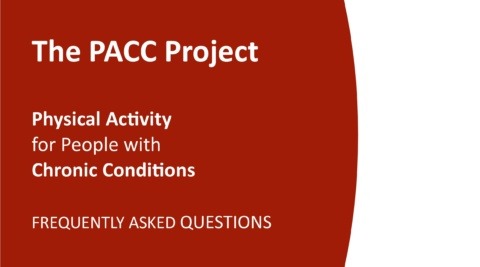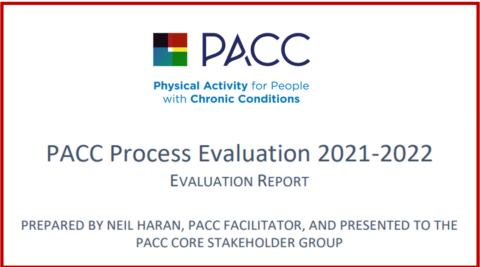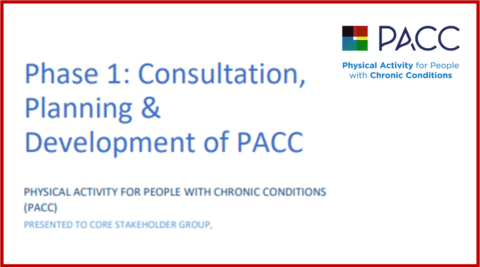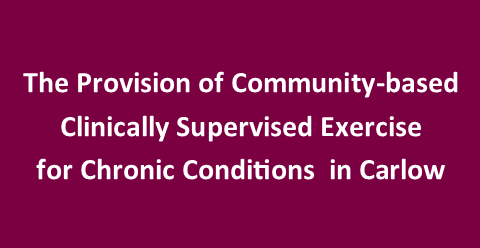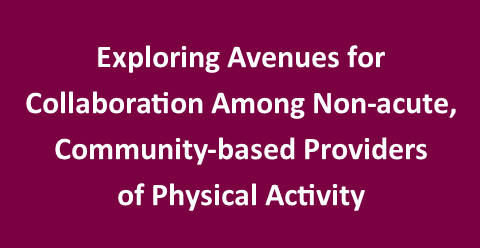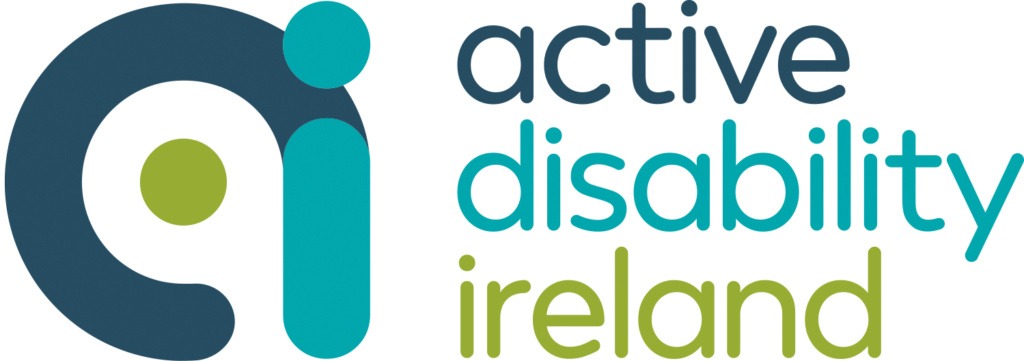Who is PACC?
PACC involves a multiagency collaboration of physical activity and health professionals, alongside academics from Higher Education Institutions. It was established in 2021 by the Carlow, Waterford and Westmeath Sports Partnerships, following initial grant aid received from the Dormant Accounts Innovation Fund, administered by Sport Ireland. The initiative arose from a recognition of the need for collaboration across systems to remove systemic barriers that prevent or reduce opportunities for people with chronic conditions to participate in regular, appropriate, high quality and accessible physical activity in accordance with their needs and interests.
Who is involved? Who governs? Who manages?
The core partners involved in PACC are representatives from the following bodies:
Physical Activity: Carlow, Waterford and Westmeath Sports Partnerships.
Health: HSE Healthy Eating and Active Living Programme and HSE Self-Management Support Programme.
Academics: South East Technological University, Carlow and Waterford, and the Technological University of the Shannon: Midlands Midwest.

Representatives from these bodies participate in a Core Stakeholder Group which is responsible for the direction and oversight of the initiative. Waterford Sports Partnership, as project lead, manages the initiative and all associated funding on behalf of the core stakeholders.
Who initiated PACC? Who enabled or funded PACC?
PACC was initiated by the Carlow, Waterford and Westmeath Sports Partnerships following a successful funding application to the Dormant Accounts Innovation Fund, administered by Sport Ireland. PACC has also received other funding from the HSE, Sláintecare and Carlow Sports Partnership.

To whom is PACC relevant?
PACC aspires to equal opportunities for people with chronic conditions to participate in regular, appropriate, high quality and accessible physical activity in accordance with their needs, capacities and interests. Consequently, PACC is relevant to all those who share this concern, including individuals living with one or more chronic conditions.
Why is PACC in existence? What is the rationale and context for the establishment of PACC?
The HSE estimates suggest that one in two Irish people over the age of 50 lives with at least one long-term, chronic condition and that these are inversely associated with socio economic status. Given the growth in the ageing population nationally and internationally, the prevalence of individuals living with chronic conditions is likely to increase.
One of the primary risk factors for the development of chronic conditions is physical inactivity. Similarly, physical activity has been found to result in health benefits for those diagnosed with chronic conditions.
In spite of the importance of physical activity in preventing, minimising and reducing the health impacts of chronic conditions, there remain gaps nationally in opportunities for people with chronic conditions to participate in regular, appropriate, high quality and accessible physical activity in accordance with their needs, capacities and interests. Among others, these gaps include:

PACC describes these gaps as systemic barriers to the participation of people living with chronic conditions in physical activity. A core rationale for PACC is the belief that collaboration across the systems of physical activity, health and academia is essential to remove those systemic barriers.
What are Chronic Conditions?
The HSE describes Chronic Conditions (also frequently referred to as chronic disease or chronic illness) as long-term health conditions that need ongoing treatment and management.

The HSE estimates that one in two Irish people over the age of 50 lives with at least one long-term, chronic condition. Physical activity is recognised as an important element in preventing and treating chronic conditions.
Why did the PACC partners come together?
The PACC partners came together to address gaps in the provision of physical activity opportunities for people living with chronic conditions. They believed that responsibility for addressing those gaps did not rest with any one single sector, but with a range of professionals from physical activity, health and academic backgrounds. Therefore, the PACC partners came together to promote collaboration across physical activity, health and academic sectors. At the time of PACC’s inception, no structure existed in Ireland to facilitate the collaborative engagement of those disciplines.
The PACC partners have sought to innovate in the area of physical activity for people with chronic conditions. Part of that innovation involved different disciplines (physical activity, health, academic) collaborating with one another in ways that they had not previously collaborated.
PACC is designing, testing and evaluating practical innovations to increase opportunities for people with chronic conditions to participate in regular, appropriate, high quality and accessible physical activity in accordance with their needs and interests. These innovations have the potential to inform the practice of professionals from physical activity, health and academic backgrounds; to contribute to new ways of working and to offer new solutions to existing problems. A core objective of PACC is that innovations developed via PACC will be replicable by others and scalable to improve physical activity outcomes for a larger number of people living with chronic conditions.
What does PACC do and how does it do it?
PACC has convened partners from physical activity, health and academic sectors to plan, design, implement and evaluate initiatives that will improve opportunities for people living with chronic conditions to participate in regular, appropriate, high quality and accessible physical activity in accordance with their needs, capacities and interests – both now and into the future.
In 2021, the PACC Core Stakeholders undertook a short but comprehensive consultation process, designed to deepen understanding of the barriers limiting the opportunities of people with chronic conditions from participating in regular, appropriate and accessible physical activity. Participants in the consultation included individuals living with chronic conditions, health and social care professionals and community-based physical activity providers. The results of the consultation assisted core stakeholders in the initiative to build a shared understanding of one another and to agree a shared understanding of need within the initiative.
Based on the findings of that consultation process, PACC developed three pilot initiatives. PACC is also about to embark on a fourth project, focused on exploring possibilities of increasing collaboration between a range of non-acute, community-based physical activity providers (e.g. sports/activity/fitness providers, HSE community-based providers, clinically supervised providers and patient advocacy groups).
The pilot projects that have been enabled under PACC are outlined in some detail below.
All of PACC’s work operates to a set of core principles. These concern commitments to:
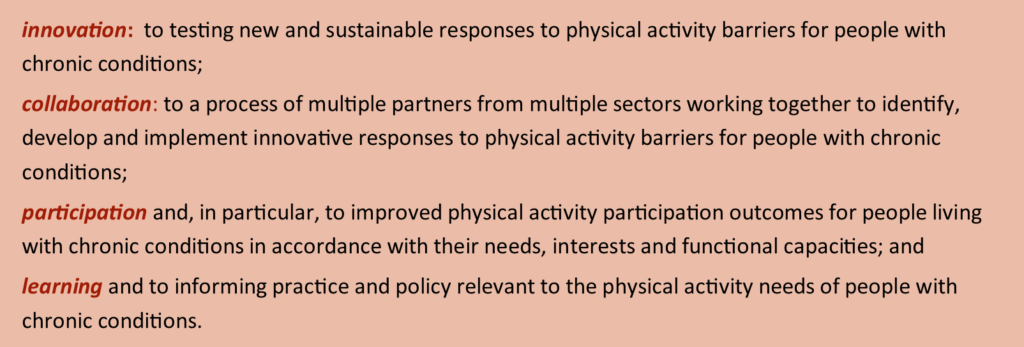
What makes PACC innovative?
PACC has innovated by bringing together stakeholders from diverse backgrounds to engage collectively in needs-based, outcome-focused interventions that increase the participation of people with chronic conditions in physical activity. PACC has developed a model of effective interdisciplinary working, optimising the strengths of participating sectors, while also setting out to address gaps in those sectors in a collective manner. In tandem, as noted above, PACC has initiated practical, evidence-informed, collaborative innovations, strategically designed to remove barriers and thereby contribute to increased participation of people with chronic conditions in physical activity.
What else is happening in this space alongside the work of PACC?
Since PACC was established, two other significant programmes have evolved nationally that are particularly pertinent to the work of PACC:
The Physical Activity for Healthcare Model (PAPHM): PAPHM is an initiative of the HSE, designed to develop, refine and implement a physical activity model in the Irish healthcare system that will enable people at risk of/living with chronic conditions to become and remain physically active in their communities. It seeks to respond systematically to the current absence of a standardised physical activity model in the healthcare system and is closely integrated with the HSE’s Making Every Contact Count (MECC) framework and the HSE’s Model of Care for the Prevention and Management of Chronic Disease.
The Physical Activity for Health Officer Pilot Programme: The Physical Activity for Health Officer pilot programme, funded by Sláintecare via Sport Ireland , aims to address physical activity as a risk factor for chronic conditions. The pilot consists of six Physical Activity for Health officers, housed within 6 Local Sports Partnerships (LSP). The officer role will seek to ensure that those who are ready and who need more attention and care transitioning to community physical activity will be facilitated with appropriate physical activity programmes on the pathway to mainstream LSP and other community programmes that are on offer locally.
What makes PACC different?
PACC is different to other initiatives on a number of fronts:
- It involves convening stakeholders from a variety of professional backgrounds to address barriers to physical activity for people living with chronic conditions.
- It focuses on collaboration across systems and on removing systemic barriers that prevent or reduce opportunities for people with chronic conditions to participate in regular, appropriate, supported and high quality physical activity in accordance with their needs and interests.
- Its focus is on creating pilot initiatives that can be replicated on a wide scale across the country.
From where is PACC operating? Is the work of PACC location-specific?
PACC operates under the leadership of Carlow, Waterford and Westmeath Sports Partnerships. PACC initiatives therefore tend to be piloted in the catchments of Carlow, Waterford and Westmeath Sports Partnerships. But the aim is to create pilot projects that can be replicated on a wider scale across the country. One of the PACC Projects, which is supporting the design of quality assured accredited training and continuous professional development packages for physical activity professionals working with chronic conditions, already works to a national remit.
Please feel free to contact us HERE if you would like more information on PACC
Article Modified: May 01, 2024 2:29 pm






